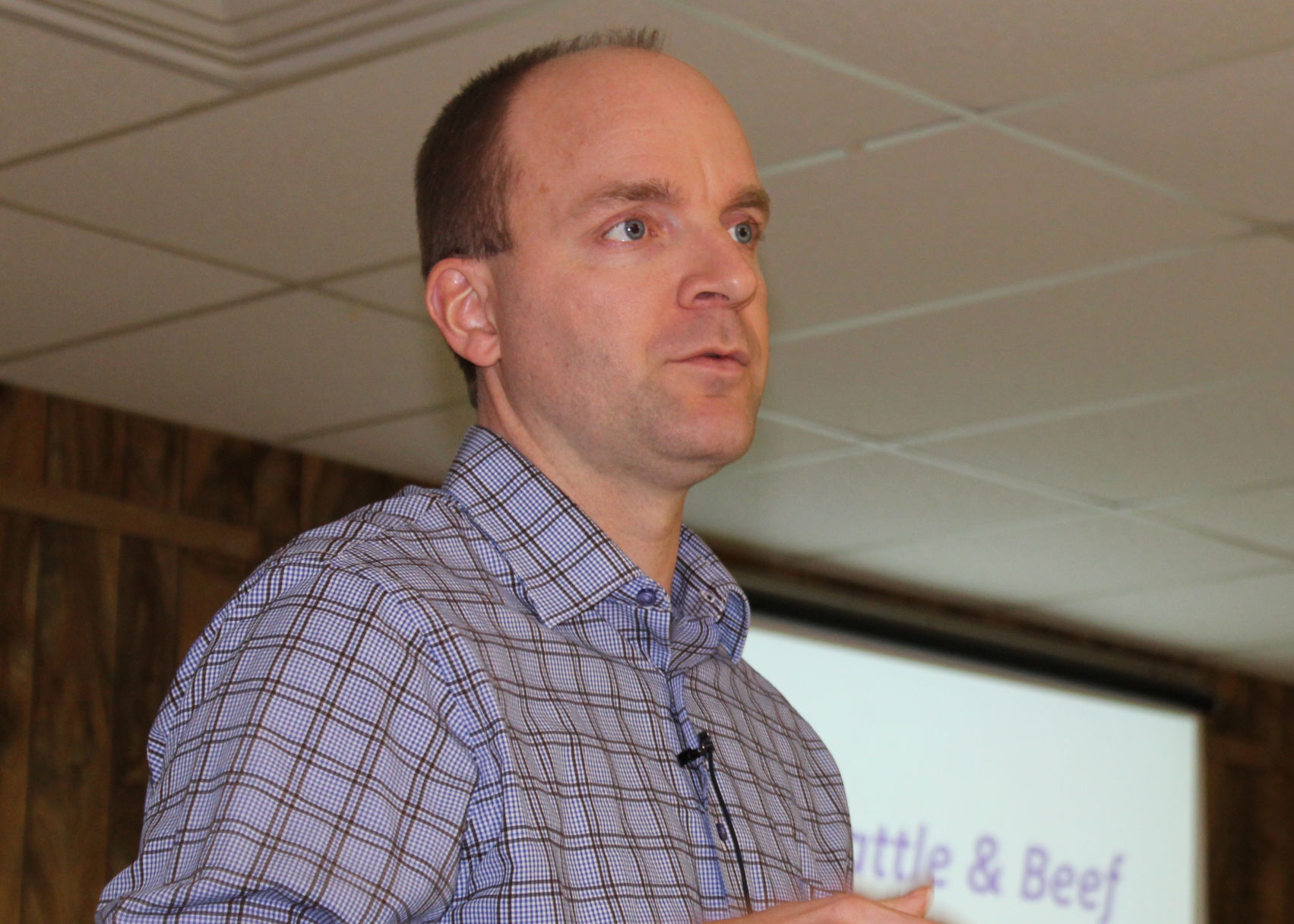There are many parallels between today’s agricultural economic downturn and the 1980s, too many for farmers and agricultural economists to ignore. Which is why Kansas State University experts put together the traveling Farming for the Future program, stopping at locations across the state in January.
At the Scott City event, Jan. 10, growers learned about land rental rates and valuations and the cattle, beef and grain outlooks for 2018 among other topics they need to understand to position their farm businesses for however long this downturn might last.
Mykel Taylor, associate professor of agricultural economics at K-State, led off the discussion with a focus on land rental rates and values. Using Kansas Farm Management Association data, she talked about profitability in ag and how that affects land values and rental rates.
“In the good years, 2008 to 20013, we had profitability and we made money,” she said. “So what did we do? We spent it on land and new paint. We bid it up, especially on buying ground and renting ground.” But then, we had 2014 to 2016, where farmers went from making money to losing money overnight in a huge swing, she said.
“I don’t like to compare this to the 1980s, but I think this is a situation in and of itself that will become known as its own very historical period,” she said. The ramifications of this sudden shift from making money to losing money overnight will be talked about for years to come, she said.
Since the market highs in 2015, land values have decreased. Non-irrigated cropland is projected to be down 25 percent; irrigated cropland down 4 percent; and pasture down 15 percent. The long-run trends, Taylor added, show up to a 50 percent decline in value from the market high on into 2018 and longer.
“Land values are down and they are headed in a downward direction,” Taylor told growers. It’s not the good news everyone wants to hear, she added, but it’s important to objectively evaluate how land values can affect a farm’s profitability in a downturn.
But why are rental rates staying high? Taylor said it’s because good yields in 2016 and profits made on soybeans meant some farmers were still able to pay rents that otherwise wouldn’t be affordable with average or below average yields. Other farmers are willing to pay more than they can afford in the short run, but that length of the short run is going to vary by producer.
Taylor said now is the time for landowners and tenants to sit down and discuss adjusting rental rates to reflect what’s going on in the sector right now but still be equitable.
“We have to be very conservative in our financial situations and really pay attention to what our finances are doing and how we manage our farms,” Taylor said. “We have to be really strong managers of our farms. If so, we’ll be OK.”
Beef demand is up
Glynn Tonsor, professor of agricultural economics for K-State, offered up a beef cattle outlook for 2018.
The cattle sector is in a unique position at the end of the fourth quarter 2017, Tonsor said.
“From a supply front, we have a much larger calf crop, more hooves in the system, than we’ve had in the last couple of years,” he said. The challenge is that anytime you put more pounds on the market, you should see downward pressure on prices unless, Tonsor stressed, you have something growing demand.
“The good news for beef in 2017 is that we had growing demand. Prices were higher in the fourth quarter 2017 than we anticipated 6 months ago when we saw these larger supplies coming.” The pressure is to keep that demand the same or build it to keep these positive returns for cattlemen because more pounds of beef are coming down the chain.
Tonsor shared calf prices from Livestock Meat Industry Council that show trends in 500- to 600-pound steer calves in fourth quarter 2017 were about $20 to $35 per hundredweight more than 2016. Annual calf prices have gone from a low of $139 per cwt. in 2016 to a high of about $169 per cwt. in 2017 and projected to drop just to $149 to $151 per cwt. in 2018 and 2019 if they continue on the trend.
Tonsor then looked at the yearly cost to run a cow. According to the U.S. Department of Agriculture’s figures, the trend starting in 1989 to today is that average costs go up about $19 per cow per year. In 2014 the cost peaked at $879 per cow per year, and has been cut back to about $800 per cow per year in the last two years. Tonsor said there are many things that might attribute to lower costs for maintaining cowherds, and it’s uncertain if that figure will plateau or continue to decline. Still, he expects the breakeven cost for a 550-pound steer should be about $145 per cwt. That’s slightly better in 2018.
All of this, though, rides on demand staying the same or increasing in the next two years, Tonsor stressed. Exports are going to continue to be a core part of the demand story for beef cattle producers.
The presentations from each location of the Farming For the Future meetings can be found online at http://www.agmanager.info/events/farming-future/farming-future-presentations.
Jennifer M. Latzke can be reached at 620-227-1807 or [email protected].


